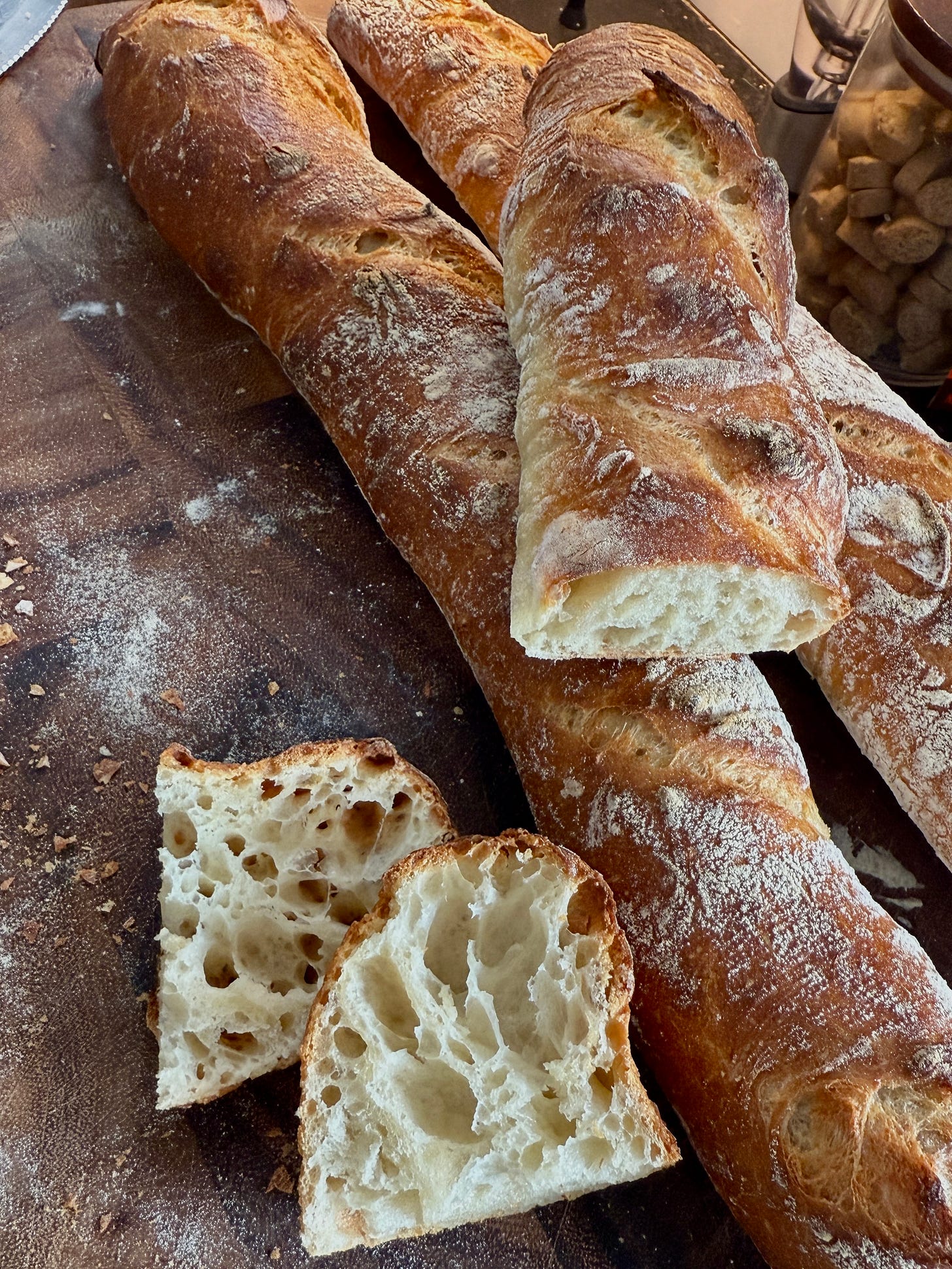In My Bag-uette
This felt like an appropriate title for what these projects mean to me. Score, steam & stone: let's make some baguettes.
When it comes to this series, I really am in my bag. I am so excited and inspired to focus and challenge myself and try new and complex things.
Bread making has been something I’ve tried and failed at many times. It started in 2020 with a simple no-knead pandemic bread, a failed sourdough starter, a too-thin focaccia. This January, when most are cutting out alcohol and increasing their veg intake, my main focus was on eating good, whole foods.
Because of that, I wanted to attempt some homemade bread. My first try was whole wheat bread, because what’s better than knowing your sandwich bread has but five ingredients? After that turned out so well, I’ve been testing my limits with dinner rolls, a redemption focaccia and now: baguettes.
I learned my lesson last week- diving into these projects with little research simply won’t do. I spent hours researching recipes, methods, tips and tricks, and ultimately landed on following Claire Saffitz’s recipe because it was paired with an excellent video that I referenced at each stage.
The irony of absolute classic dishes is that the methods, ingredients, and tools are highly debated. Below I’ve outlined some of the most discussed topics and my experience with each.
Poolish
A poolish is basically a starter with commercially produced yeast. Purists will say that a poolish is not traditional, but many modern chefs believe it leads to a better flavor and crumb. I opted for the poolish because it was simple, though added significantly extra time.
Mixing and Kneading
Because of the high water content (75%), the dough is extraordinarily sticky. I opted to gently fold the dough, almost like stretch and folds, for five minutes prior to resting for the true stretch and folds. Some will knead, though I’d imagine you’d have to lower the water content to successfully do so. Others would add to a mixer, which I do not own, but the folding method worked beautifully for me.
Fermentation
Part of my draw to Claire’s recipe was the overnight fermentation. With proper planning, I always feel like an overnight break in a project of this size is a welcome reprieve. I was shocked to open the fridge the next morning and see that the dough had more than doubled, which hasn’t always been the case with some of my other bread attempts. There are recipes that use same day fermentation, but I chose not to follow.
Score, Steam & Stone
When it comes to all of the ‘necessary’ tools for baguette making, I had none. No couche, lame, transfer peel, or baking stone. I used a traditional kitchen towel, a tourné knife, a folded up grocery bag, and an upside down baking sheet for my replacements, respectively.
Getting a lame and peel are on my list, both of which can be purchased for mere dollars at a hardware store. I debated the stone after this attempt due to the smoke that the empty baking sheet caused in my preheating oven, but ultimately I don’t have the space or need for one, and I’m not convinced that it would alleviate the smoke.
Lastly, the steam is highly debated. Do modern bakers need to assist an oven with steam, when most hold steam so well anyway? I did the steam method and feel that it was a huge factor in contributing to my crunchy crust and soft interior.
When all is said and done, I feel extremely proud of this adventure. The baguettes came out truly perfect, better than any baguette I’ve ever purchased outside of France, and it will absolutely be added to my repertoire for future endeavors.





